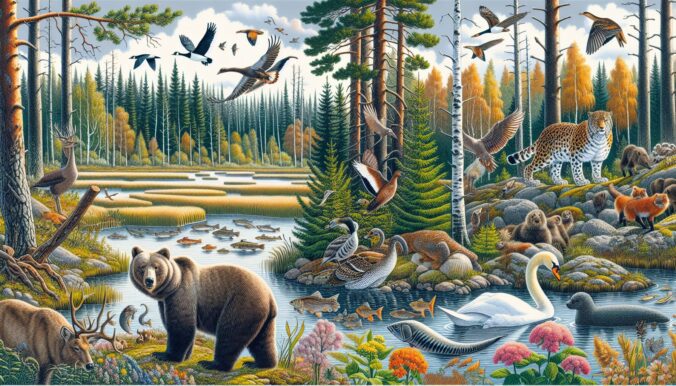From the dense forests of the north to the expansive wetlands of the south, Finland is home to a diverse array of plant and animal species. This unique biodiversity is a result of the country’s varying climate and landscape, which provide habitats for a wide range of flora and fauna. Let’s delve into the fascinating world of biological diversity in Finland.
Introduction to Finland’s Biodiversity
Finland’s natural environment is characterized by its vast expanses of forests, numerous lakes, and rugged coastline. These diverse landscapes support a wide variety of ecosystems, making Finland one of the most biologically diverse countries in Europe.
The country’s flora is dominated by coniferous forests, particularly pine and spruce trees, which cover over 70% of Finland’s land area. These forests provide habitats for an abundance of plant species, including a variety of mosses, lichens, and wildflowers.
In addition to its rich plant life, Finland is also home to a diverse range of animal species. The country’s forests are inhabited by animals such as moose, reindeer, bears, and wolves, while its lakes and wetlands support a plethora of bird species, including swans, geese, and ducks.
Threats to Finland’s Biodiversity
Despite its wealth of biodiversity, Finland’s natural environment faces a number of threats. Habitat loss due to deforestation, urbanization, and agricultural expansion is a major concern, particularly for species that rely on specific ecosystems for survival.
Climate change is also a significant threat to Finland’s biodiversity, as rising temperatures and changing precipitation patterns can disrupt the delicate balance of its ecosystems. This can lead to shifts in plant and animal populations, as well as an increased risk of invasive species taking hold.
Furthermore, pollution and overexploitation of natural resources pose additional challenges to Finland’s biodiversity. Pollution from industrial activities and agriculture can degrade water quality and harm aquatic ecosystems, while overfishing and hunting can deplete populations of fish, mammals, and birds.
Conservation Efforts in Finland
To address these threats to biodiversity, Finland has implemented a range of conservation measures aimed at protecting its natural environment. The country has established a network of national parks and nature reserves that safeguard important habitats and species, providing opportunities for research, education, and recreation.
Finland has also taken steps to promote sustainable land use practices, such as sustainable forestry and agriculture, to minimize the impact of human activities on the environment. By working with local communities, businesses, and government agencies, Finland is striving to strike a balance between conservation and economic development.
In addition, Finland is actively involved in international conservation efforts, such as the Convention on Biological Diversity and the European Union’s Natura 2000 network. These initiatives aim to preserve biodiversity on a global scale and ensure the long-term health of our planet’s ecosystems.
Conclusion
Finland’s unique combination of climate, geography, and ecosystems has created a rich tapestry of biological diversity that is worth protecting. By understanding the threats facing the country’s biodiversity and taking action to address them, Finland can ensure that its natural heritage will be preserved for future generations to enjoy.
Through conservation efforts, sustainable land use practices, and international cooperation, Finland is leading the way in protecting its diverse array of plant and animal species. By working together to conserve and sustainably manage its natural resources, Finland is setting an example for other countries to follow in the quest to safeguard the planet’s biodiversity.

